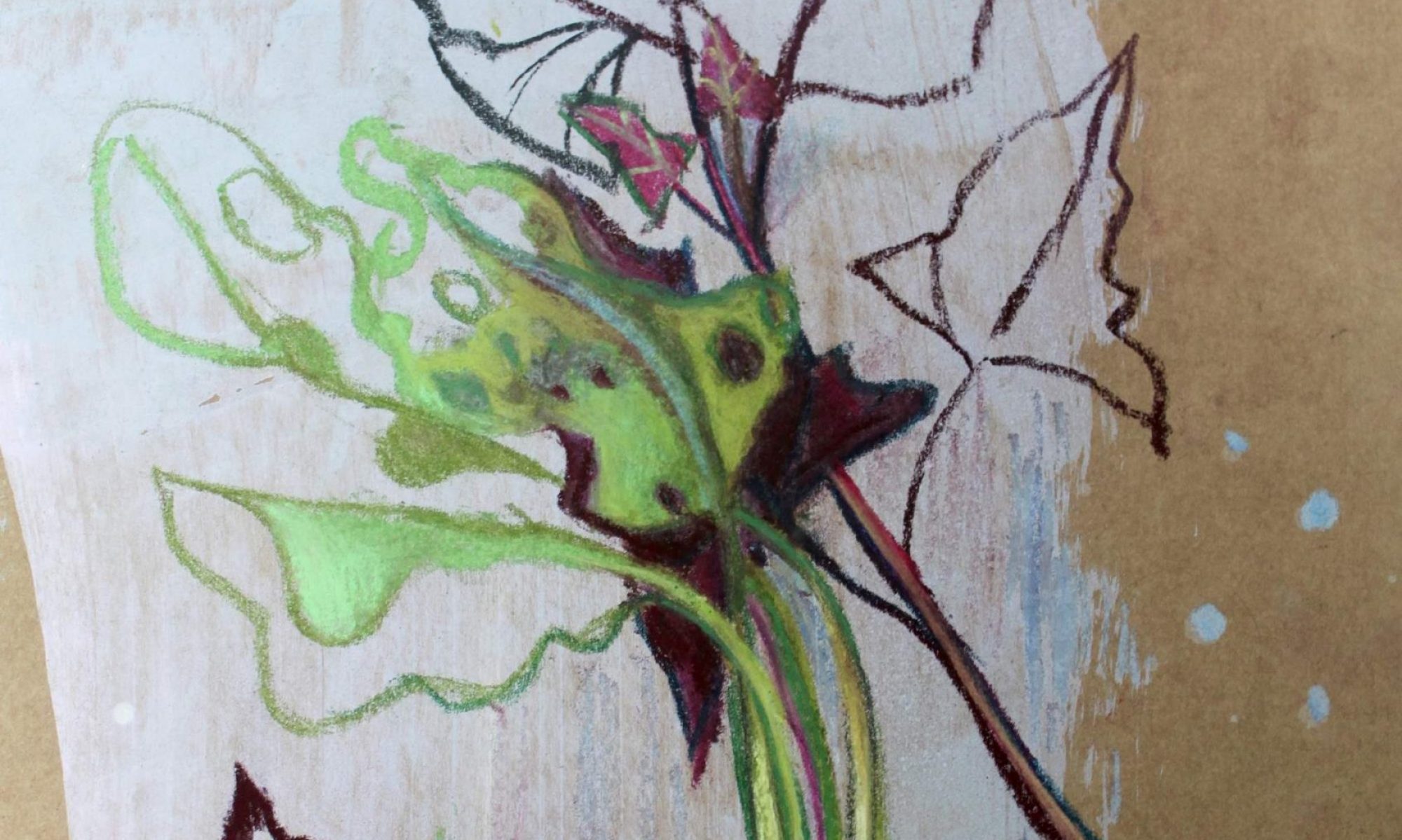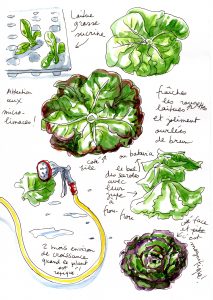Let’s go for a new season of gardening !
Among the first seeds of the season, it always begins with the lettuce in order to get them green and crisp in the springtime. There are more than four hundred varieties in the official catalogue. What a performance vegetable creators !
For a long time, one has to be contented to cultivate the varieties of the 17th century. Mister La Quintinie, the Head Gardner of Louis the 14th cultivated already twenty five varieties of lettuces among them “the big blonde”, “the comical, “or “the palatine”. Then during the 19th century, they were all sorts of picturesque names such as « la blonde de Cazard », or « la Batavia Queen of ice », and from all sort of colors such as « The Red from Grenoble », « The winter brown” or « The Gold of spring ». In 1880 was born a star among all : the Marvel of the Four Seasons”.
One can sort out the lettuces in three categories: the head lettuce like the Batavia, which is more common in our marketplace, the roman lettuce, open head, with its long and crunchy leaves, and the lettuce called “ the Oakleaf “ with its tender and fragile leaves which we can cut when and as we need it.
Then in the 19th century, there were all kinds with picturesque names like in 1880, a star was born among all: “the marvel of the four seasons”.
Lettuce can be classified into three categories: head lettuce such as batavia, the most common on our stalls, romaine lettuce with its long and crisp leaves or even open head oak leaf lettuce with its tender and fragile leaves to cut. as needed.
The challenge for lettuce in the vegetable garden is about the sowing schedule. The only way to harvest them on a regular basis, is to sow them every three weeks from March the 1st. Four weeks later, they are ready to be transplanted outside, and finally six weeks later, ready to be eaten. Of course, the younger the lettuce is, the more tender it is .
By the way, where do we plant the seeds? Amateur gardeners plant them outdoors, but under a light and removable shelter, such as a plastic tunnel in a well-exposed plot. Indeed, a mild temperature is necessary because most lettuces germinate between twelve and fifteen degrees Celsius which means either in a greenhouse, or under a frame, or in a veranda or simply … in your kitchen. For most professional vegetable gardeners, all crops are grown under cover from sowing to harvest.
And in the past, what was the practice?
When I started my book “City Gardeners”, I met two retired gardeners who told me about their apprenticeship at the famous horticulture school ( ENSH or Ecole Nationale Superieure d’Horticulture ) in the King’s vegetable garden in Versailles. Last witnesses of a bygone era, they liked to grow early vegetables in wooden boxes. These boxes, or chests, were filled first with horse manure mixed with dead leaves, then covered with potting soil, and finally the whole mixture protected by glass. This old technique creates islands of heat, where seeds of so-called “early” vegetables, germinate. Proud of their production, these old gardeners still have the passionate energy of their youth, and they need this energy to transport the wheelbarrows of soil or manure. This is also why I like to hang out with former gardeners so much: their hard work, combined with a fine knowledge of the plant world, is inspiring.

